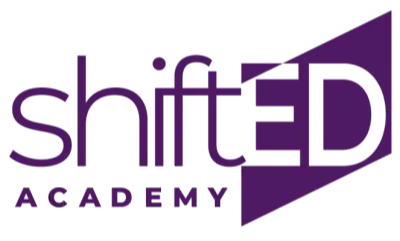Blogs

Magnetize Opportunities: How LinkedIn Visibility Unlocks Leadership Success
Magnetize Opportunities: How LinkedIn Visibility Unlocks Leadership Success ...more
Career ,Visibility
December 04, 2024•4 min read

Rock the Mic This Holiday Season: 5 Essential Speaking Tips for Hosts
Whether you’re hosting a formal soiree or a casual get-together, stepping up to speak is an honour and a chance to connect. ...more
Presenting
December 03, 2024•3 min read

3 Gamification Tools for Audience Engagement
Here are shiftED Academy's favourite (and FREE!) gamification tools to effortlessly increase your audience's engagement levels during your next presentation. ...more
Audience Engagement
November 04, 2024•7 min read

Harnessing the Power of Neuro Presence to Elevate Your Leadership
Neuro Presence boosts visibility and combats imposter syndrome by aligning presentation skills with brain science, making you THE top choice for that next gig. ...more
Leadership Presence
March 31, 2024•3 min read

The Power of Moderation: Why Executives Need an Online Moderator
This blog post discusses the importance of having a moderator for online sessions led by executives. It highlights key scenarios when a moderator is necessary, the benefits they bring, and the value o... ...more
Presenting
November 05, 2023•3 min read

Reinventing Yourself: Elevating Your Career or Business
Have you ever felt like you're not living up to your full potential? That you want to be known and celebrated for something more meaningful than what you currently do, aligned with your values? You're... ...more
Career
October 18, 2023•4 min read

Centre Stage with Cynthia Sweeney
Cynthia Sweeney, Owner/CEO of Simply Good Form Inc., is a graduate of shiftED Academy and an Alumni Member of shiftED's Coterie. ...more
Centre Stage
September 23, 2023•9 min read

Persuasive Presentations: 3 Must-Haves for Successful Outcomes
Pitching an idea, seeking investment, prepping for an interview, or trying to sway an audience to take action? You MUST include these 3 elements. ...more
Career
September 20, 2023•4 min read

4 Presentation Tips for Engaging Presentations
No matter how many times you present, it is important to always keep your focus on your audience (not your slides, not your filler words, not script). Check out these tips! ...more
Audience Engagement ,Presenting
August 09, 2023•3 min read
Practical Tips
Useful Advice
Sign-up to be the first to receive notification of new posts!
I agree with shiftED Academy's Terms and Privacy policies, including processing of email and IP address, and the use of cookies, to facilitate my authentication and posting of comments.




